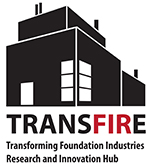TransFIRe User Journey Method Pilot Study: Lessons learned from differing priorities for stakeholders
J McKendree & S Cinderby
Stockholm Environment Institute, University of York
Summary
- TransFIRe Workstream 3 (WS3) explores collaborations between Foundation Industries (FIs) and nearby communities.
- User Journey methods are useful for exploring expectations, challenges and potential solutions in such partnerships.
- A workshop was planned to pilot a User Journey with an example FI, local businesses and community organisations concerned with skills promotion and net zero goals.
- Community organisations were more likely to show interest than the FI companies or local small businesses.
- Finding the appropriate contact for community engagement in industry was difficult.
- Many FIs have limited time for external engagement and prioritise technical actions to increase short term productivity and profitability. TransFIRe could potentially facilitate industry/community connections and collaborations.
- Conducting individual User Journey interviews remotely may offer a more effective means of exploring opportunities than face-to-face workshops.
TransFIRe Workstream 3 (WS3) has a goal of exploring and promoting beneficial collaborations between Foundation Industries (FIs) and the communities nearby. One of the methods that can be used to explore innovations and the impact on communities is the User Journey. This method originated in service design where it is used to create a step-by-step representation of how a user interacts with a service. The method captures a description of what happens at each stage of the interaction, the user reactions, and what obstacles and barriers they may encounter. The User Journey can be used to explore actual experience of users or a “to-be” journey which looks at what people would like a service to provide or to explore expectations and build a consensus about what needs to be done (Williams, 2016).
A half-day pilot of the User Journey method was planned for mid-June 2022 to investigate use of this method for exploring possible innovations in FIs and opportunities for local communities to benefit. In discussion with the TransFIRe academic expert for glass, we chose recycling of flat glass, particularly from greenhouses, and contacted manufacturers of flat glass and civic organisations in a nearby former mining town.
Finding (and keeping) stakeholders
After a number of attempts to find someone to speak to at the largest glass manufacturer, a TransFIRe partner, we spoke with the Integrated Business Planning Project Lead about the workshop exploring co-benefits for industry and local groups. He was interested and agreed to attend, if the company managing director (a TransFIRe collaborator) gave permission. We also contacted another flat glass manufacturer in the area who seemed interested, but then declined to be involved saying “unfortunately this isn’t something that at the moment fits with [our] other priorities.” The local Association of Voluntary Service which runs a programme providing funding for placements for 16-24 year olds at risk of unemployment and also approaches to creating community-led transition to Net Zero responded quickly and the Strategy and Partnerships Manager was very happy to be involved. The District Council Economic Development Unit also quickly agreed to send a team member.
Others groups agreeing to send members were a glasshouse research centre, the Vertical Farming Development Centre at Crop Health and Protection, and the Circular Economy Officer from the Local Enterprise Partnership (LEP). The workshop was scheduled six weeks in advance to give attendees time for planning. However, emails and phone calls to the industrial glass partner after the initial interest in attending remained unanswered and three days before the workshop, the company responded saying that other priorities arose and they were pulling out. We decided to go ahead with the other stakeholders, but two days before the workshop, the academic technical partner contracted Covid and so the workshop was cancelled.
Lessons Learned
The following “user journey” captures our experience as TransFIRe researchers.

Overall, industry partners seemed less interested than community organisations in exploring collaborations. It was generally difficult to find appropriate industry contacts responsible for community engagement activities. TransFIRe could potentially have a role in facilitating future industry/community connections and collaborations. People found it difficult to spare time for a face-to-face workshop, particularly those from industry. Based on this lesson, we decided that we would conduct remote individual User Journey interviews in our next case study.
Reference: Ogeya M, Muhoza C, Johnson O.W. (2021) Integrating user experiences into mini-grid business model design in rural Tanzania, Energy for Sustainable Development, 62, 101-112.



